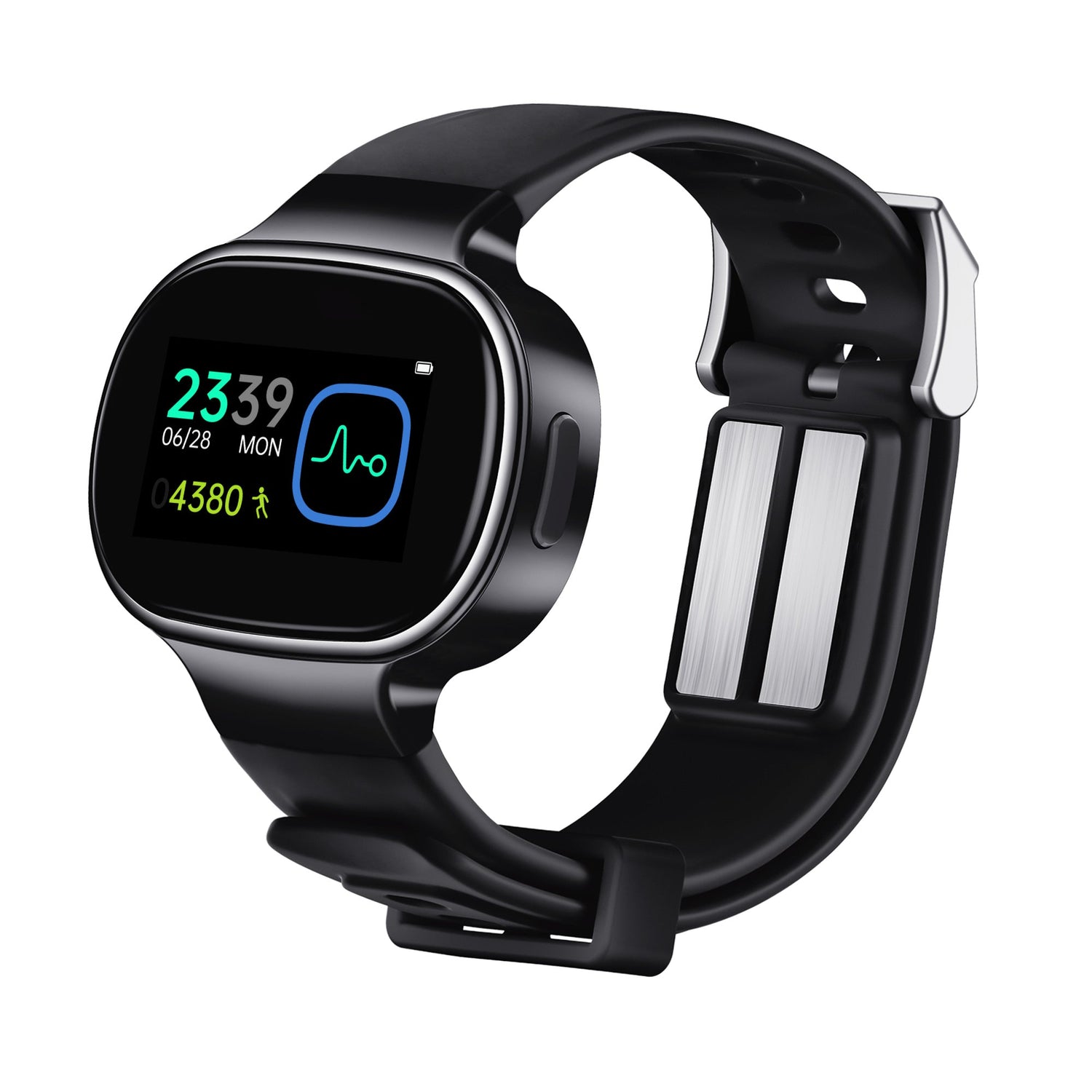In recent years, scientific research has deepened our understanding of how different parts of the nervous system interact to influence not just balance and motion, but also our stress levels, emotional well-being, and even sleep. At the center of this fascinating connection lies the vestibular system, a part of the inner ear that does much more than just help us stay upright.
This article explores the link between the vestibular system and the autonomic nervous system, and how EmeTerm, a wearable neuromodulation device, taps into this connection to help manage nausea, stress-related symptoms, and more.
What is the Vestibular System?
The vestibular system is a sensory system located in the inner ear that helps regulate our sense of balance, spatial orientation, and motion. It detects changes in head position and movement through tiny structures called the semicircular canals and otolith organs. These structures send signals to the brain to help maintain stability and coordinate eye movements and posture.
But beyond balance, the vestibular system also communicates with deeper brain regions involved in emotional regulation and autonomic control, including the brainstem, cerebellum, and hypothalamus.
The Vestibular System's Role in Stress and Anxiety
While the vestibular system is best known for its role in maintaining balance and spatial orientation, recent neuroscience research has revealed that it also plays a critical role in emotional regulation and autonomic balance.
The vestibular nuclei in the brainstem are closely linked with components of the limbic system, including the amygdala and hippocampus — brain regions responsible for emotional processing, memory formation, and fear conditioning. These bidirectional pathways mean that vestibular input can influence emotional states and, conversely, emotional stress can exacerbate vestibular symptoms.
Animal studies support this mechanism. In rodent models, chronic vestibular deafferentation — or the removal of vestibular input — leads to behavioral patterns similar to chronic anxiety and depression. (Balaban, 2001) As for human, research has shown that vestibular dysfunction can lead to heightened anxiety, panic attacks, and increased fear responses, particularly when the brain struggles to resolve conflicting sensory signals from the environment. (Tschan, 2009)

EmeTerm: Neuromodulation at the Intersection of Vestibular and Autonomic Function
EmeTerm is a clinically approved, drug-free wearable device that uses Transcutaneous Electrical Acupoint Stimulation (TEAS) to modulate nerve activity and relieve nausea, including motion sickness, morning sickness, and postoperative nausea. TEA uses TENS technology, but with a different application strategy based on acupuncture principles. This targeted stimulation is believed to not only affect local nerves but also influence broader neural pathways, including autonomic and central nervous system circuits.
A recent study showed that applying transcutaneous electrical acupoint stimulation (TEAS) on the wrist, specifically over the median nerve, is directly linked to reduced sympathetic activation. (Al-Zamil M., 2024) Although the research primarily addresses sympathetic-immune interactions, it establishes that wrist-area electrical stimulation can modulate autonomic pathways. This supports the concept that EmeTerm’s wrist-based stimulation contributes to dampening stress-related sympathetic arousal.
Moreover, a recent paper in Sensors compared median nerve stimulation (MNS) at the wrist with auricular vagus nerve stimulation (AVNS) and found that MNS achieved greater reductions in stress-induced cardiovascular arousal: Stimulation effectiveness: MNS ≈ 34% vs. AVNS ≈ 19%
MNS more reliably lowered heart rate and peripheral vasoconstriction, two key markers of sympathetic activation. (Zhou Y, 2025) This underscores that wrist-based TEAS can be not only convenient but also more potent than ear-based alternatives in autonomic modulation.
Although EmeTerm currently lacks direct research in areas such as anxiety, stress and insomnia. However, these indirect research results indicate that EmeTerm is a potentially effective intervention method. These findings support EmeTerm’s role as a practical and scientifically grounded wearable tool for regulating the autonomic nervous system and alleviating stress-linked physiological arousal.
A New Frontier in Wearable Neuromodulation
The link between the vestibular system and autonomic function offers exciting opportunities for drug-free therapy. EmeTerm’s ability to modulate nerve activity via a non-invasive, wrist-worn device provides a practical solution for those suffering from motion-related nausea, and potentially even stress and sleep-related symptoms.
By bridging ancient acupoint stimulation with modern neurotechnology, EmeTerm taps into a powerful neural network — one that connects your inner ear, your gut, and your emotional well-being.
References
- Balaban, C. D., & Shepard, N. T. (2001). Behavioral changes after vestibular deafferentation in rats. Journal of Vestibular Research, 11(6), 287–296.
- Best, C., Tschan, R., Eckhart, C., & Beutel, M. E. (2009). Anxiety and panic disorders in patients with vestibular vertigo syndromes. Psychosomatic Medicine, 71(1), 59–64. https://doi.org/10.1097/PSY.0b013e31818f9e70
- Al-Zamil, M., Kulikova, N. G., Minenko, I. A., Shurygina, I. P., Petrova, M. M., Mansur, N., Kuliev, R. R., Blinova, V. V., Khripunova, O. V., & Shnayder, N. A. (2024). Comparative Analysis of High-Frequency and Low-Frequency Transcutaneous Electrical Stimulation of the Right Median Nerve in the Regression of Clinical and Neurophysiological Manifestations of Generalized Anxiety Disorder. Journal of clinical medicine, 13(11), 3026. https://doi.org/10.3390/jcm13113026
- Zhou Y, Masoumi Shahrbabak S, Bahrami R, Rahman FN, Sanchez-Perez JA, Gazi AH, Inan OT, Hahn J-O. Non-Pharmacological Mitigation of Acute Mental Stress-Induced Sympathetic Arousal: Comparison Between Median Nerve Stimulation and Auricular Vagus Nerve Stimulation. Sensors. 2025; 25(5):1371. https://doi.org/10.3390/s25051371
- www.emeterm.com
- www.watmedical.com

